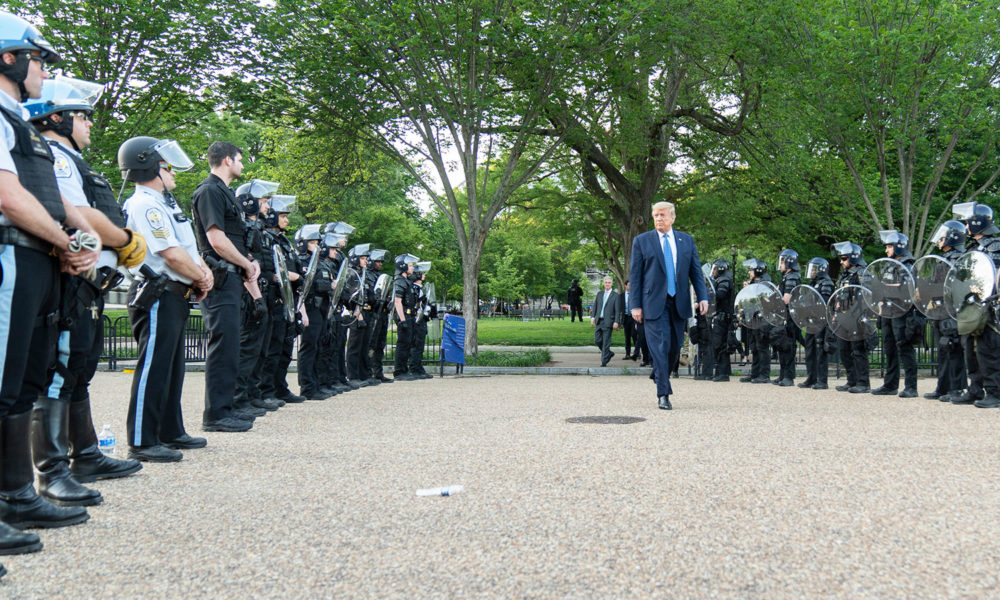For those of you that follow my blog posts you know me as someone who writes about the Department of the Interior and how our public lands are being managed. Today’s post is a bit of a departure from the usual and I’d like to start on a personal note. Please bear with me.
I’m not a political scientist. My PhD is in geography, specializing in climate change. I’ve been trained in natural resource management, but I gained my most valuable experience working with the National Park Service for almost a decade.
I loved working with the National Park Service. It was more than a job – it felt like family. I still feel like I’m talking to family when I talk to anyone from the agency, even those I never worked with directly, because I always felt we share common values, one of which is our dedication to preserve those resources that comprise America’s story.
And so today I’d like to talk about a member of the family, the Department of the Interior’s National Park Police, and discuss how troubled I am by their leader’s testimony in relation to a crucial moment in the history we’re living through right now.
Park police actions called into question
The National Park Service Park Police is among the oldest law enforcement agencies, having been created by President George Washington in 1791. They are a valued part of the civil service as they work to protect the public as well as federal property.
Their role, however, has now come into question following video of some officers using force on June 1 to clear protestors from Lafayette Square in Washington D.C., moments before President Trump was later photographed outside St. John’s Church.
Yesterday the acting chief of park police, Gregory Monahan, testified that his officers issued three warnings to the assembled protestors almost one hour before the established 7pm curfew in an effort to clear them so that a security fence could be erected.
He denied that force was used to clear the crowd to allow the president’s photo op. This assertion was soon called into question by testimony from Major Adam DeMarco of the National Guard, who was present that day and testified that it was his observation that “the use of force against demonstrators in the clearing operation was an unnecessary escalation of the use of force.”
Democracy first, not dubious testimony
Our first amendment explicitly states that we have the right to peaceably assemble. The Union of Concerned Scientists has explicitly stated support for our democratically established rights.
Mr. Monahan testified that protestors were cleared because they were using projectiles and that officers needed to clear a way for a security fence to be installed in Lafayette Park; yet Major DeMarco’s testimony disputed this as he observed that the equipment did not arrive until three hours after force was implemented. When presented with video footage of an Australian media crew who were struck by park police, Monahan admitted that he did not see any violence from the protestors in the video, yet he still felt his officers used “tremendous restraint.”
During the hearing evidence was submitted that accused acting chief Monahan of having a history of being an unreliable witness. This was followed by witness testimony from DeMarco that seemed to further reinforce the suggestion that Monahan’s testimony could be inaccurate. DeMarco directly observed the events that day and asserted that the use of force was disproportionate because the majority of protestors were conducting themselves in a peaceful manner.
A call for greater transparency
We have conflicting testimony over whether the events of Lafayette Square were violent. Looking at the raw evidence we have an incomplete picture. We know for a fact that police officers were hurt that day and that three officers were admitted to hospital that night. During the hearing it was argued that the majority of those injuries occurred after law enforcement started deploying chemical agents and munitions into the crowd.
Radio recordings of the events that day could not be released because park police later discovered the recorder was malfunctioning. Body cam footage could have made all the difference in providing a clearer picture of what happened. It not only protects officers from false allegations but can also protect the public from abuses of power.
A bill for body cameras that followed the death of an unarmed man at the hands of park police in 2017 is currently being considered. Yet during the hearing Monahan asserted that it would not be feasible for the Park Police to enact body camera requirements despite money being allocated for it as part of the recent draft house appropriations bill. Nearly half (47%) of law enforcement agencies in the United States now use body cameras, so it should be possible for park police to adopt this measure.
This is a pivotal time in America’s story
I’d like to end by saying how incredibly disturbed this whole committee hearing made me feel. I strongly suggest that you watch it too.
I know how deeply National Park Service staff care not only about the resources, but also about the reputation of the agency itself. The allegation that park police misused their authority in violation of the first amendment and contributed to a possible slide toward autocracy makes me sick to my stomach.
We are in midst of a pivotal time in America’s story, I implore the park police to consider new ways to be more transparent. They owe us that.

